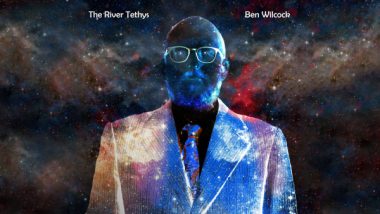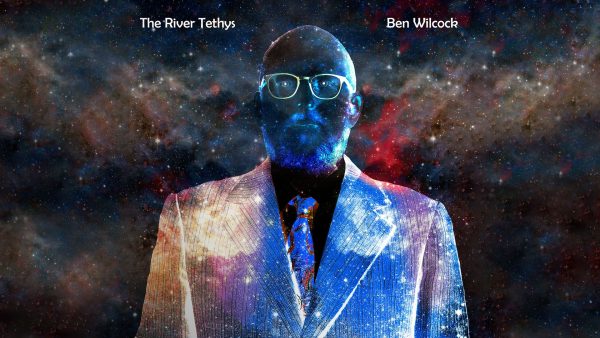 New Zealand Various: Ben Wilcock Quartet (Ben Wilcock [piano], Tristan Carter [violin], Daniel Yeabsley [bass], John Rae [drums]). The Old Library Arts Centre, Whangarei, New Zealand. 22.7.2023. (PSe)
New Zealand Various: Ben Wilcock Quartet (Ben Wilcock [piano], Tristan Carter [violin], Daniel Yeabsley [bass], John Rae [drums]). The Old Library Arts Centre, Whangarei, New Zealand. 22.7.2023. (PSe)

The Whangarei Music Society’s 2016 Jelly Rolls recital raised the vexed question of the ‘admissibility’ of jazz in a chamber music context (see discussion in review). It was apparently resolved by the Lucien Johnson Quartet’s 2020 recital (again, see review). I concluded that, whether or not ‘classical’, small group jazz is most definitely chamber music. Featuring the Ben Wilcock Quartet this, the third of 2023’s four recital WMS season (given in association with Chamber Music NZ), re-opened that question!
I now found myself pondering certain ‘incompatibilities’ between the two ‘performance cultures’. Most obviously, at jazz concerts the audience may applaud an artist’s entrance or a noteworthy solo even while the music is playing, whereas at classical concerts applause over the music is strictly a no-no. The solution? In a jazz chamber recital the classical fans should simply adopt the jazz rule.
Less obviously, classical audiences – whether they are listening to a classical or a jazz recital – not unreasonably expect a programme note, even if it is only a list of items, plus at least a brief note about each. Spoken introductions, which are typically off the cuff, are no substitute – listeners get only one shot, and if they don’t hear, or mishear, or forget anything (or, for that matter, if the speaker overlooks something significant), they are snookered. In this case, methinks, shouldn’t the jazz folk defer to the classical custom?
The Ben Wilcock Quartet comprises the Jelly Rolls as per our 2016 recital, augmented by violinist Tristan Carter. According to the CMNZ/WMS blurbs, their programme featured original compositions by Wilcock, improvisations, arrangements of jazz standards, and items from Wilcock’s album, The River Tethys, inspired by Dan Simmons’s science fiction tetralogy Hyperion. In jazz circles, this album is regarded as a ground-breaker. I, for whom jazz is not so much a forte as a piano – and who hasn’t read the books! – would have appreciated a few pertinent pointers.
Their opener, one of only four of the ten items whose title I actually caught (see less obviously, above), was Aenea (a key female character in the saga). Initially, Wilcock alone occupied the stage; the other players came on at intervals, each bowing before making his mark. Afterwards, I realised that they were probably expecting the ‘jazz’ applause rule to apply; sadly, the audience stuck with the ‘classical’ one! Lasting for well over 15 minutes, Aenea ranged widely but nonetheless, in spite of feeling a little loose-limbed, was blessed with some formal discipline – a timely reminder that these musicians are all well-qualified and/or have vast experience.
Wilcock began with unexpectedly imposing solemn chords, which gradually melted into blues-tinted musing. Secondly came Yeabsley, contributing some splendidly slithery sounds contrasted by Bartókian ‘snap pizzicati’. Thirdly, Rae took his place at the drum-set, immediately reminding us of his remarkably responsive, inventive wit. Finally came Carter, playing wistfully (immediately reminding me of, dare I say, Stephane Grapelli!), decorating the edges of his andante with elegant baroque twiddles.
T’ien Shan (one of the Hyperion worlds) grabbed our attention by the throat, showering us with eerie violin harmonics and tremolandi, before spilling into hectic streams of furious flourishes. Now this, I will admit, sounded a bit avant-garde for jazz, particularly when Yeabsley played a really cool triangle! I am presuming the third item was also from the album, starting as it did with a flurry of truly weird noises – not only from the violin – after which Carter struck up a breezy tune accompanied by Wilcock’s syncopated jabbing and heaps of neat stuff from bass and drums, all interrupted occasionally by virtuosic (yes!) general pauses. Yet, fabulous as it was, mostly it didn’t feel as though it had been delivered via UFO courier.
The Butterfly, a traditional Irish tune, began on solo violin, Carter’s embellishments hinting pointedly at a bagpipe origin. After a pause, the violin resumed with a becoming lilt, the others joining in and developing a gratifying enrichment of tone, Rae’s drums skittering along at four – possibly even eight? – times the basic pulse. Nonetheless, to me it seemed laced with lonely undertones – possibly why, later, the drums developed a fractious, cross-rhythmic reaction to the violin’s endless tune-spinning.
I found item 5 a curate’s egg: at one turn Wilcock veered dangerously close to the realm of ‘lazy jazz’, reprieved by this episode being related to the theme. Otherwise, all was intriguing and exciting: led off by the violin with another ‘old fashioned’ tune, the music was strong on rhythm and enlivened by the violin’s ‘scratching’ out a spastic outline of the tune, triggering intense activity – and ending on a varied recapitulation!
Something completely different was Goodnight TV, a by-product of an Aussie tour kiboshed by the 2020 Covid outbreak. All four players clustered closely around the piano, Rae (of necessity) improvising a ‘drum’ by applying his brushes to the piano’s woodwork! Moreover, the scaled-down sound allowed Yeabsley’s quirky bass to shine, which, from my vantage-point, unfortunately was rarely the case. Apparently, bits of all sorts of tunes were woven in – hence, good fun if you know them!
Item 7, which had something or other to do with ‘revolution’, was fired off by a transfixing drum-break, in which Rae virtually ‘orchestrated’ his array of instruments. Through a succession of violin/piano variations, it developed into something of a knees-up. The brief Item 8 somehow related to ‘Star Trek’; I guess they didn’t mean the TV series, because I didn’t recognise the tune. Never mind, Estelle (I think) had an unusual start – an explosive fortissimo, from which it took off like the clappers, Rae’s drums fair crackling and Yeabsley working his fingers to the bone. As this ‘exposition’ expired, the drums broke into a ‘Latin American mode’ for a conclusive ‘development’, bristling with goodies.
Wilcock’s introduction to the quartet’s thoroughly Latin American encore involved an amusing and rather risqué tale, central to which was a well-known tune. Afterwards, Ben alleviated my embarrassment by reminding me that it was Besame Mucho! It was very deftly done, including a truly ingenious ‘note splitting’ piano variation and a diversionary jest, wherein Yeabsley pretended that he had ‘fallen flat’ and had to be given a leg up onto the right note.
In some ways this last was the best of the evening; without detracting from what went before, here there was more inspired invention and a palpable, infectious sense of sheer, undiluted enjoyment. Regardless of my cautionary comments, this last largely applies to the whole recital. I am really getting to like the idea of “jazz chamber recitals”; perhaps Ben & Co. might consider working their magic on some pukka classical stuff – just imagine, say, Eine kleine Nachtmusik getting the Wilcock works!
Paul Serotsky
